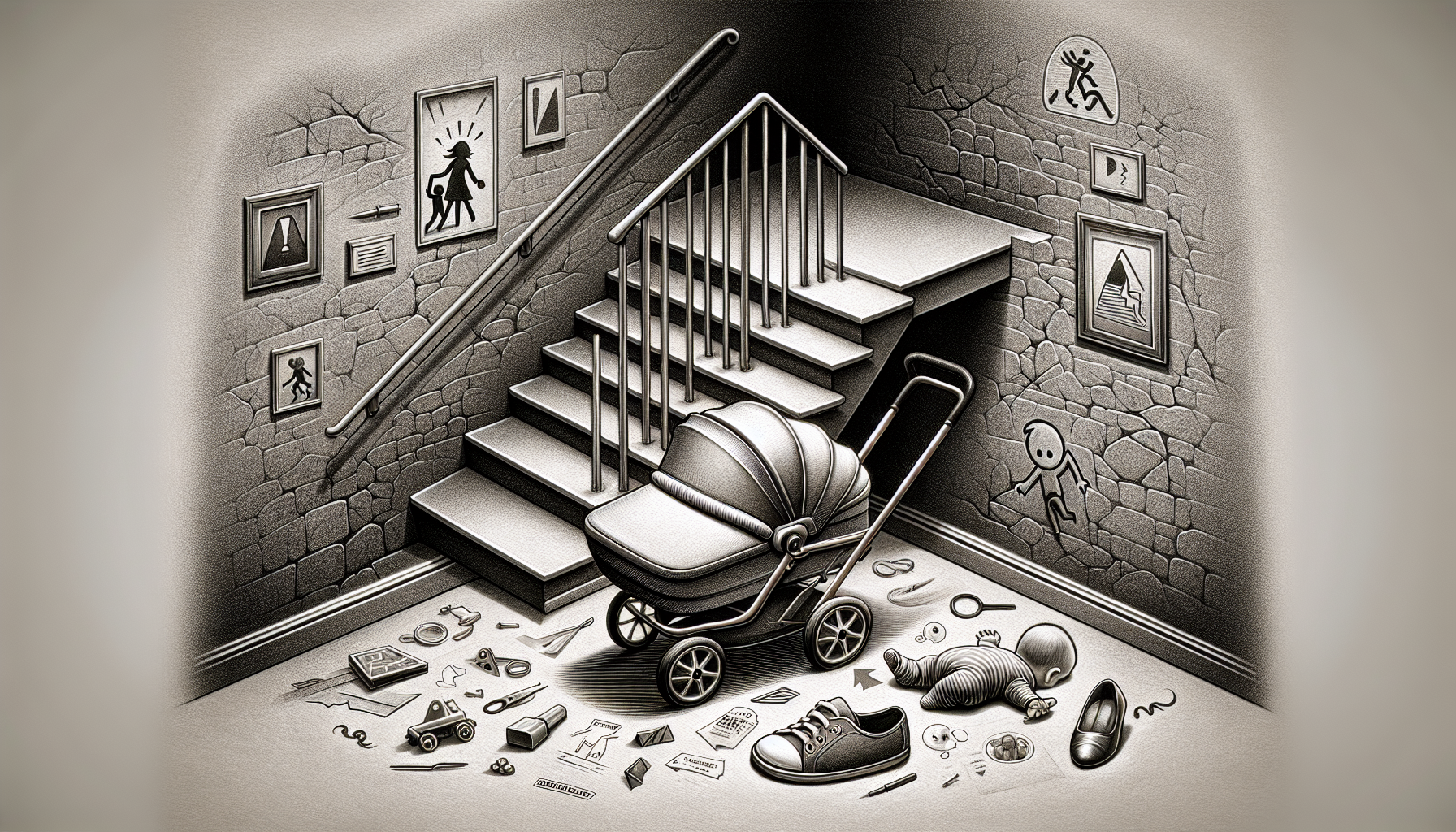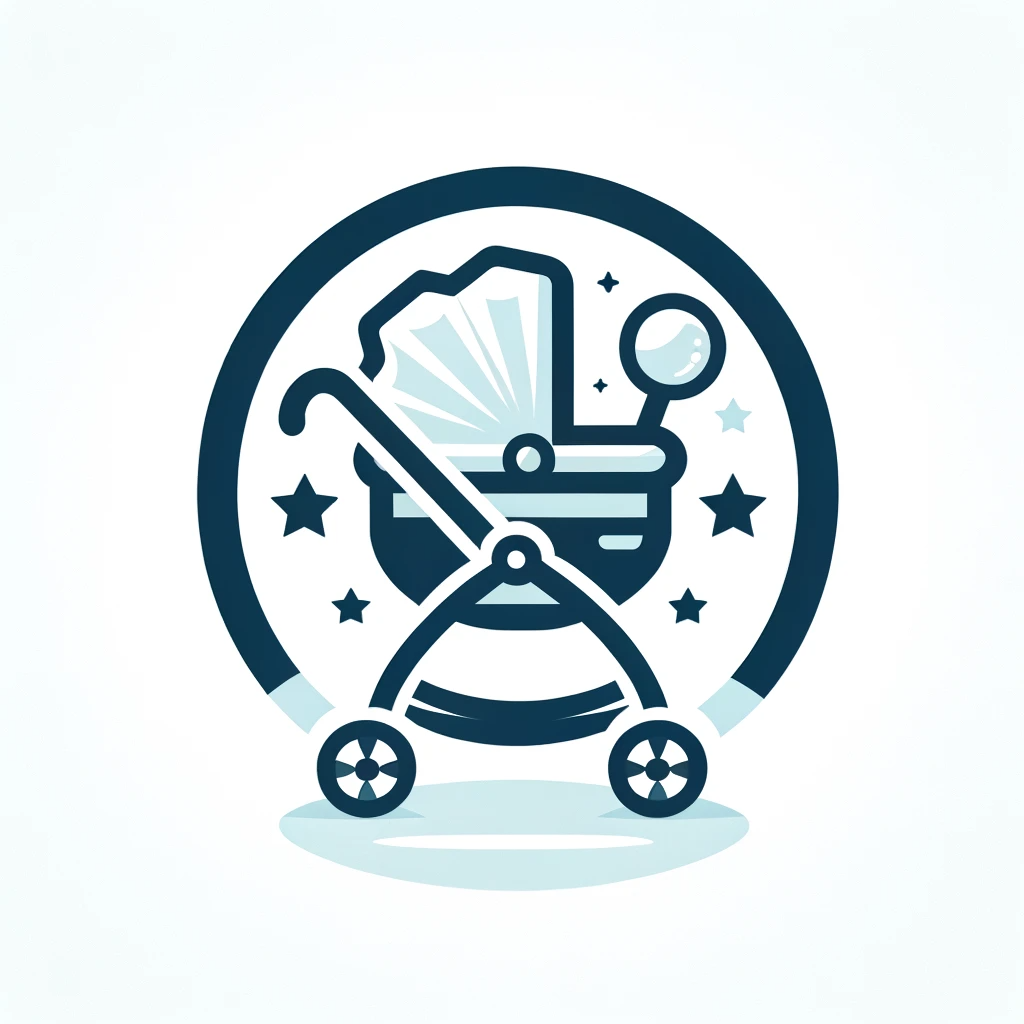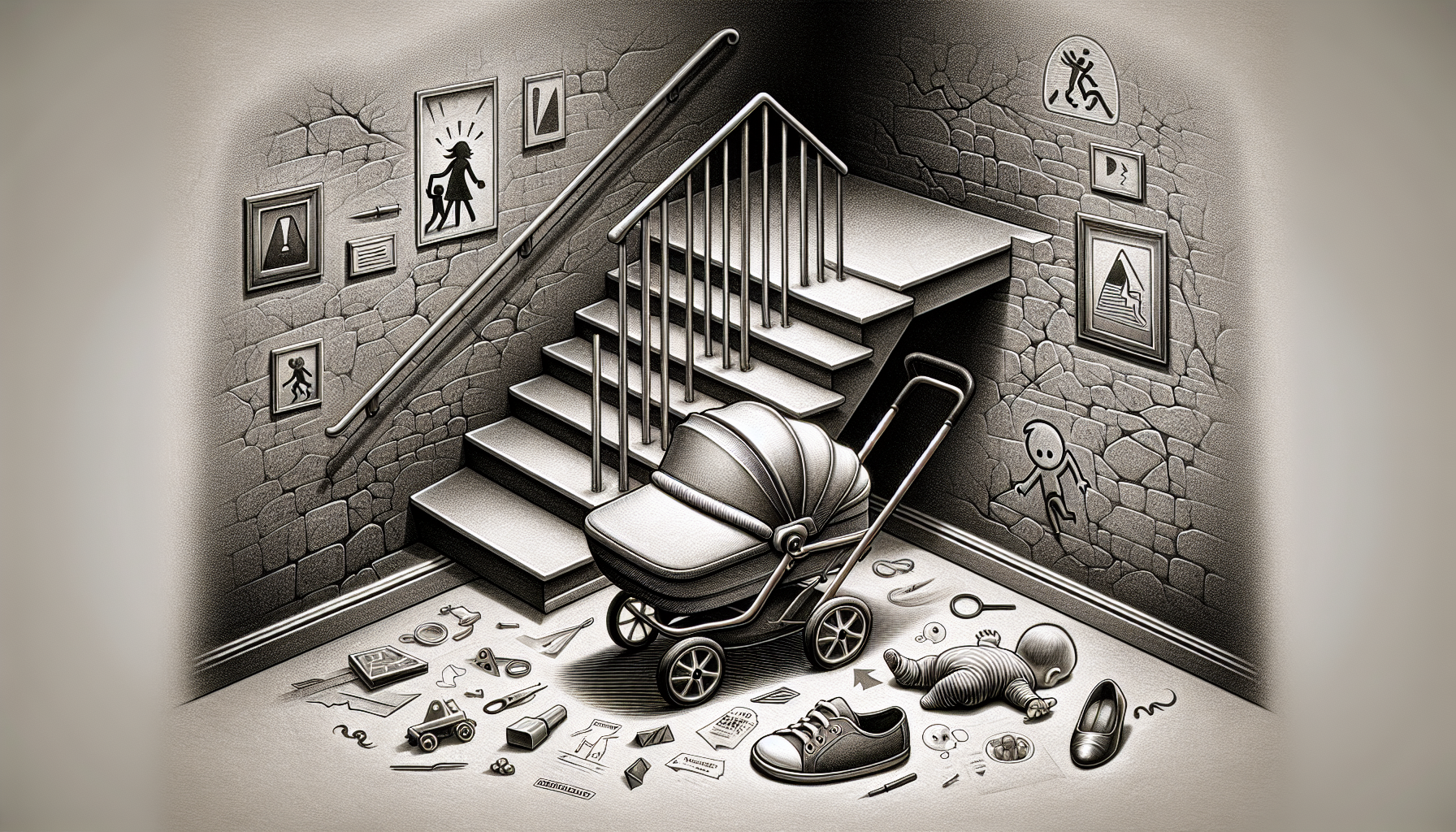As a parent, your child’s safety is always a top priority. With the convenience and ease of transporting your little one in a stroller, you may never have thought twice about potential dangers. However, it’s important to be aware of some possible risks that could arise while your child is nestled snugly in their stroller. From tipping over to collisions and even sun exposure, there are factors to consider to ensure your child’s well-being while on the go. Let’s explore some of these potential dangers and how you can take steps to avoid them.
Accidental injuries
Falls from strollers
One of the potential dangers for children in strollers is the risk of falls. While strollers are designed to keep children safe and secure, accidents can still happen. It is important to ensure that the child is properly strapped in and that the safety harness is secure. Caregivers should also be cautious when navigating uneven terrain or steep inclines, as these factors can increase the likelihood of falls.
Tip-overs
Another concern when it comes to stroller safety is the risk of tip-overs. This can occur if the stroller is overloaded with heavy bags or if the child leans too far to one side. It is crucial to distribute the weight evenly and to avoid hanging heavy items on the back of the stroller. Caregivers should always keep a close eye on the child to prevent tipping accidents.
Entanglement
Children can also be at risk of entanglement in stroller accessories or loose straps. It is important to regularly check the stroller for any loose parts or frayed straps that could potentially pose a hazard. Avoid using accessories that have long strings or cords that could wrap around a child’s neck or limbs. Keeping the stroller free of unnecessary attachments can help minimize the risk of entanglement incidents.
Entrapment
Entrapment is another potential danger that needs to be considered. Caregivers should ensure that the stroller meets safety standards and does not have any gaps or openings that could trap a child’s hand, foot, or head. Regularly inspect the stroller for any damaged parts and replace them immediately to prevent potential entrapment accidents.
Physical discomfort and developmental issues
Improper positioning
Improper positioning of a child in a stroller can lead to physical discomfort and even developmental issues. It is important to ensure that the child’s body is properly supported, with the backrest reclined at an appropriate angle and the harness adjusted to fit snugly. Improper positioning can cause strain on the child’s neck, back, and overall posture. Caregivers should regularly check and adjust the stroller to ensure the child’s comfort.
Lack of physical activity
Strollers, while convenient, can limit a child’s physical activity. Spending prolonged periods of time in a stroller may restrict the child’s ability to move freely and explore their environment. This can potentially delay the development of gross motor skills and overall physical strength. It is important to provide opportunities for the child to engage in active play and exercise outside of the stroller.
Potential impact on sensory development
Spending too much time in a stroller can also have an impact on sensory development. Babies and young children benefit greatly from sensory stimulation, such as exposure to different textures, sounds, and sights. Being confined to a stroller for extended periods may limit their experiences and hinder their overall sensory development. It is important to provide opportunities for the child to engage with their surroundings and explore the world around them.
Environmental hazards
Exposure to extreme weather conditions
Children in strollers are vulnerable to the elements, especially extreme weather conditions. Exposure to excessive heat or cold can be dangerous for a child’s well-being. Caregivers should take necessary precautions to protect the child from extreme temperatures by dressing them appropriately, using sunshades or umbrella attachments to provide shade, and using blankets or covers to keep them warm during cold weather.
Sunburn and heat-related issues
Another environmental hazard for children in strollers is the risk of sunburn and heat-related issues. The child’s delicate skin is susceptible to sunburn, especially in hot and sunny weather. Caregivers should ensure that the child is adequately protected by regularly applying sunscreen, using sunshades or umbrellas, and keeping the child hydrated to prevent heat-related issues such as dehydration or heatstroke.
Air pollution and respiratory problems
Strollers can expose children to air pollution, particularly in heavily congested areas or areas with poor air quality. Prolonged exposure to pollutants can contribute to respiratory problems and potential long-term health issues. Caregivers should choose routes with cleaner air, avoid heavily polluted areas if possible, and consider using stroller covers or shields to create a barrier between the child and the surrounding environment.

Improper use and maintenance
Incorrect stroller setup
Improper setup of the stroller can increase the risk of accidents and injuries. It is important to carefully read and follow the manufacturer’s instructions for assembling and using the stroller. Failure to do so can result in structural instability, leading to tip-overs or other dangerous situations. Caregivers should regularly inspect the stroller for any loose or damaged parts and ensure proper functionality before each use.
Safety harness misuse
Using the stroller’s safety harness is crucial for keeping the child secure while in motion. However, it is important to use it correctly to maximize its effectiveness. Caregivers should ensure that the harness is properly fitted, with the straps snugly fastened and adjusted to the appropriate size for the child. Failure to use the safety harness correctly can increase the risk of falls or injuries in the event of an accident.
Insufficient maintenance and product recalls
Regular maintenance and upkeep of the stroller are essential for ensuring its safety and longevity. Caregivers should regularly check for any signs of wear and tear, loose bolts or screws, or frayed straps. Following the manufacturer’s guidelines for maintenance, such as cleaning and lubricating moving parts, can help prolong the lifespan of the stroller and reduce the risk of accidents. It is also important to stay informed about any product recalls or safety alerts related to the stroller model and promptly address any identified issues.
Risk of abduction or theft
Lack of supervision
Leaving a child unattended in a stroller, even for a short period, can pose a risk of abduction or theft. It is essential for caregivers to maintain constant supervision and never leave the child unattended, especially in public places. The child should always be within sight and reach to prevent any potential security threats.
Unsecured stroller
A stroller that is not properly secured can make it easier for a potential thief to snatch the child or the stroller itself. Caregivers should ensure that the stroller is always locked when not in use, especially in crowded areas or when taking breaks. Using security features such as locking wheels or a tethering device can provide an additional layer of protection against theft.
Target for thieves
Strollers, especially high-end or popular models, can be attractive targets for thieves. Caregivers should be vigilant and take necessary precautions to minimize the risk of theft. Avoiding leaving valuables or personal belongings unattended in or attached to the stroller can reduce the likelihood of theft. It is also advisable to use a stroller that does not draw unnecessary attention in public.
Potential hazards in crowded areas
Collisions with objects or people
Maneuvering a stroller through crowded areas can be challenging and increase the risk of collisions. Caregivers should be cautious and aware of their surroundings to avoid accidentally bumping into objects or other people. Taking wider routes, moving at a slower pace, and using caution when passing through congested areas can help prevent collisions and keep the child safe.
Difficulty navigating through crowds
Navigating a stroller through crowded areas can be difficult and may require extra attention and patience. Narrow spaces, tight turns, and obstacles can make it challenging to move smoothly. Caregivers should plan routes in advance, choose less crowded paths whenever possible, and be prepared to negotiate crowded areas in a calm and cautious manner to ensure the safety of both the child and those around them.
Strain on caregivers
Physical strain and injuries
Pushing a stroller for extended periods can put a strain on the caregiver’s body and increase the risk of injuries. Poor posture, repetitive motion, and excessive lifting can lead to back pain, muscle strains, or other injuries. Caregivers should maintain good posture, take breaks when needed, and use proper lifting techniques to minimize the risk of physical strain and injuries.
Distraction and inattentiveness
Caring for a child in a stroller can be demanding, and caregivers may become distracted or inattentive, inadvertently putting the child’s safety at risk. It is important for caregivers to remain focused and attentive while pushing the stroller, especially in busy or potentially hazardous environments. Avoiding distractions such as cell phone use or engaging in conversations that may divert attention can help ensure the child’s well-being.
Stroller-related incidents in traffic
Safety concerns near roads and vehicles
Strollers and children should be kept a safe distance from roads and vehicles to minimize the risk of accidents. Caregivers should exercise caution when using strollers near traffic, busy intersections, or parking lots. Staying on designated sidewalks, using pedestrian crossings, and being aware of traffic signals can help reduce the likelihood of stroller-related incidents in traffic.
Overdependence on strollers
Delayed development of walking skills
Overusing strollers and relying on them excessively can hinder a child’s development of important motor skills, such as walking and balance. Spending extended periods confined to a stroller can delay the child’s progression towards independent walking. Caregivers should provide ample opportunities for the child to practice walking and gradually reduce reliance on the stroller as the child becomes more confident and capable.
Reduced exploration and learning opportunities
Strollers, although convenient, may limit a child’s exploration and learning opportunities. Walking allows children to interact with their environment, explore different textures, practice problem-solving, and develop their cognitive and motor skills. Overdependence on a stroller can restrict these valuable learning experiences. Caregivers should encourage active exploration, allowing the child to independently engage with their surroundings whenever it is safe to do so.
Lack of secure storage
Risk of theft or damage to stroller when left unattended
Leaving a stroller unattended, even briefly, can expose it to potential theft or damage. Caregivers should ensure that they have secure storage options, such as a lockable trunk or designated stroller parking areas when visiting public places or crowded venues. If no secure options are available, it is advisable to stay within close proximity to the stroller at all times to minimize the risk of theft or damage.

